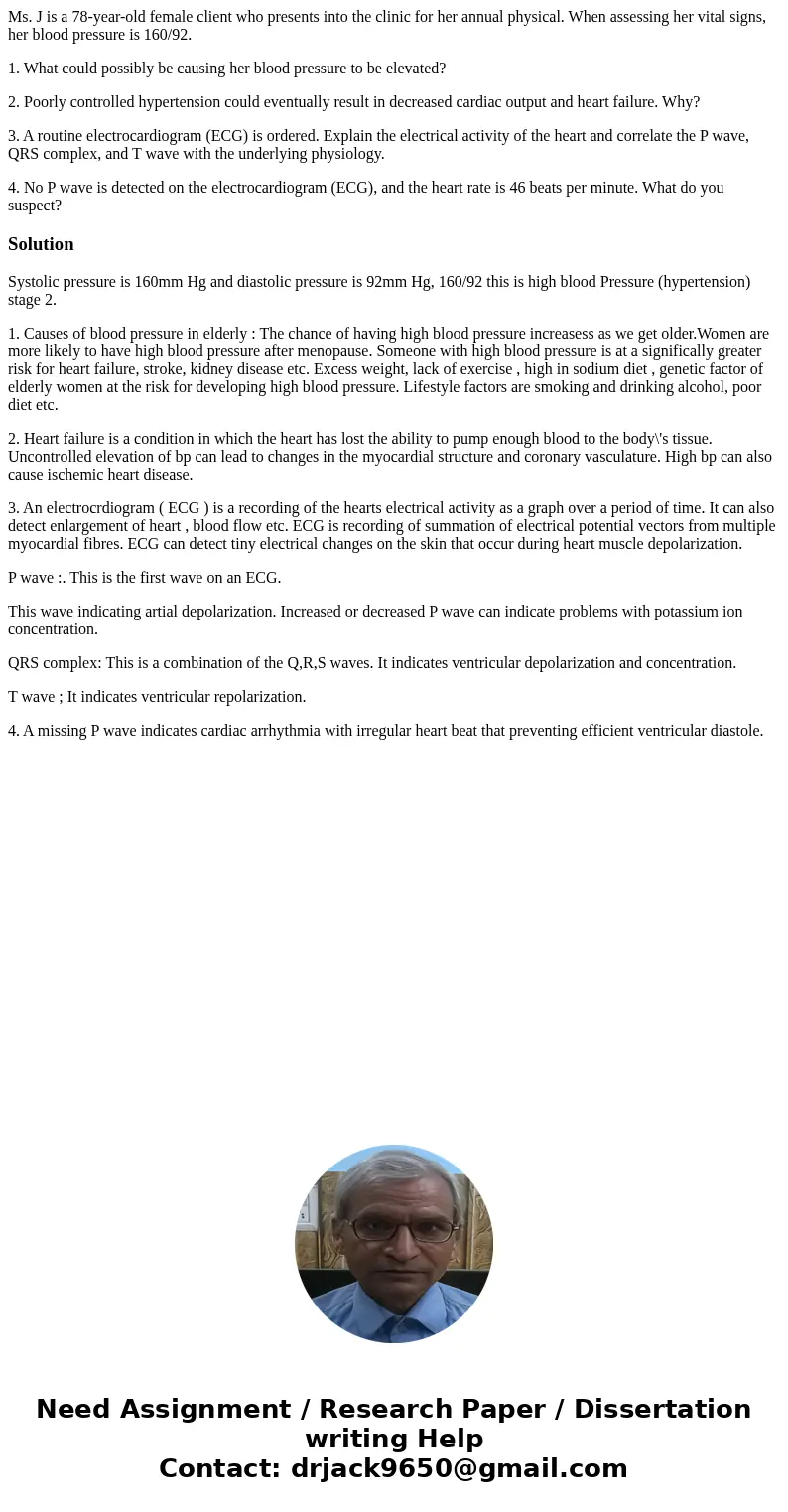Ms J is a 78yearold female client who presents into the clin
Ms. J is a 78-year-old female client who presents into the clinic for her annual physical. When assessing her vital signs, her blood pressure is 160/92.
1. What could possibly be causing her blood pressure to be elevated?
2. Poorly controlled hypertension could eventually result in decreased cardiac output and heart failure. Why?
3. A routine electrocardiogram (ECG) is ordered. Explain the electrical activity of the heart and correlate the P wave, QRS complex, and T wave with the underlying physiology.
4. No P wave is detected on the electrocardiogram (ECG), and the heart rate is 46 beats per minute. What do you suspect?
Solution
Systolic pressure is 160mm Hg and diastolic pressure is 92mm Hg, 160/92 this is high blood Pressure (hypertension) stage 2.
1. Causes of blood pressure in elderly : The chance of having high blood pressure increasess as we get older.Women are more likely to have high blood pressure after menopause. Someone with high blood pressure is at a significally greater risk for heart failure, stroke, kidney disease etc. Excess weight, lack of exercise , high in sodium diet , genetic factor of elderly women at the risk for developing high blood pressure. Lifestyle factors are smoking and drinking alcohol, poor diet etc.
2. Heart failure is a condition in which the heart has lost the ability to pump enough blood to the body\'s tissue. Uncontrolled elevation of bp can lead to changes in the myocardial structure and coronary vasculature. High bp can also cause ischemic heart disease.
3. An electrocrdiogram ( ECG ) is a recording of the hearts electrical activity as a graph over a period of time. It can also detect enlargement of heart , blood flow etc. ECG is recording of summation of electrical potential vectors from multiple myocardial fibres. ECG can detect tiny electrical changes on the skin that occur during heart muscle depolarization.
P wave :. This is the first wave on an ECG.
This wave indicating artial depolarization. Increased or decreased P wave can indicate problems with potassium ion concentration.
QRS complex: This is a combination of the Q,R,S waves. It indicates ventricular depolarization and concentration.
T wave ; It indicates ventricular repolarization.
4. A missing P wave indicates cardiac arrhythmia with irregular heart beat that preventing efficient ventricular diastole.

 Homework Sourse
Homework Sourse